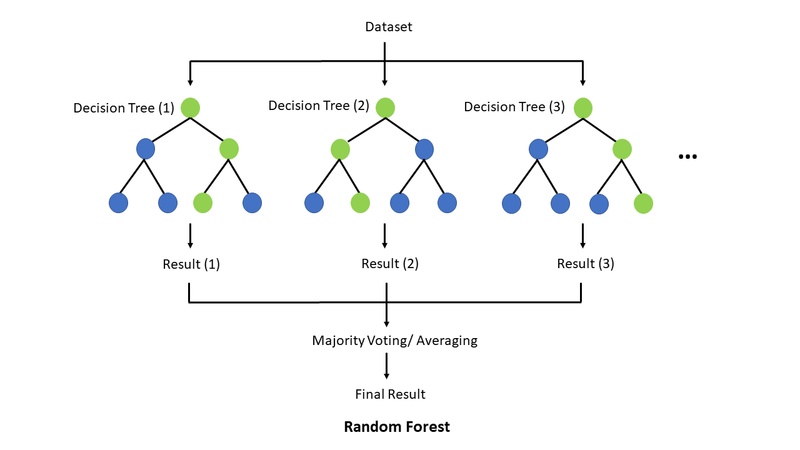Random Forest is a popular machine learning algorithm that belongs to the ensemble learning family. Ensemble learning is a technique where multiple models are used to solve a single problem, and their results are combined to produce a more accurate and stable solution.
The Random Forest algorithm is an extension of the Decision Tree algorithm, which is a simple and powerful tool for classification and regression problems. A Decision Tree is a flowchart-like tree structure, where each internal node represents a feature or attribute, each branch represents a decision or rule, and each leaf node represents a class label or output value.

The main idea behind Random Forest is to create multiple Decision Trees, and then aggregate their results by taking the majority vote or the average value. This approach can reduce the variance and bias of the model, and improve the generalization and robustness of the predictions.
One of the key features of Random Forest is the use of random subsets of the data and features to train each Decision Tree. This technique can increase the diversity and independence of the trees, and prevent overfitting and correlation.
Random Forest has several advantages over other machine learning algorithms, such as:
- High accuracy and performance, especially for large and complex datasets
- Low variance and overfitting, thanks to the combination of multiple models
- High stability, thanks to the use of Decision Trees
- High versatility and applicability, thanks to the support of both classification and regression tasks
- Good automatic feature selection capability
- Easy model tuning and optimization
However, Random Forest has several disadvantages too, such as:
- High computation and memory cost, especially for large and complex datasets
- High dependence and correlation, especially for small and similar datasets
- Low transparency and accountability, especially for explaining and understanding the model.
Random Forest is widely used in many applications, such as:
- Medical diagnosis and prognosis
- Credit scoring and fraud detection
- Image and speech recognition
- Natural language processing and sentiment analysis
- Climate and weather forecasting
- Energy and environment modeling
- Social and network analysis
Overall, Random Forest is a powerful and popular machine learning algorithm that can provide accurate and robust predictions for various types of data and tasks. It is widely used and adopted by practitioners and researchers in many domains and industries.